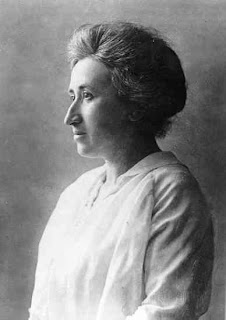Perpetrated by Oskarele
Raymond Dart (1893-1988), anatomist and anthropologist from Australia, was head of the department of anatomy at the University of Witwatersrand in Johannesburg, South Africa in 1924. That year he received a small but nearly complete skull of what looked like a child, his face intact, a lower jaw and what is called "endocasts" (a natural cast of the brain). Had been found in a limestone quarry on the edge of the Kalahari desert, in a place called Taung. Dart
realized when it was not a skull of a child "human" but must belong to some kind of ancestor of man.
But neither looked like a Homo Erectus as Dubois had found in Java a few decades before, but something much older and simian.
addition, this individual had all the baby teeth and I were finishing out the wheels, so they had to have calculated that about 3 or 4 years.
Finally, he realized that the skull could be positioned directly on the spine, indicating an upright position, which barred him from the apes.
So without thinking twice, assigned dating back two million years ago and named it "Australopithecus africanus " (meaning something like "South African ape-man").
wrote an article for the journal Nature (February 7, 1925, published) in which he called the remains of the "Taung Child", as it began to be called as "human surprisingly, considering that it was necessary to create a family completely new to explain, Homo simiadae (ape men).
was treated even worse than it was Dubois.
A scientific authorities resented almost every aspect of his theory, as well as himself. Be cast into a pompous side the callback request by Curran's research and analysis without asking anyone for help. Even the name he chose, Australopithecus, indicated for the beasts lack of academic precision, mixing Greek and Latin ... but above all he was questioned because his ideas were swept, the current scientific beliefs: all accepted at the time that humans and apes had "separated" for some 15 million years ago in Asia.
More than anything because if humans left Africa we had we would all "negroid", thought the lights the moment ... for the love of God.
was simply something that did not fit with what was known at that time.
Only twelve years later when Robert Broom , physician and palaeontologist of Scottish origin, a man of remarkable intelligence and wonderfully eccentric character (he was, for example, the habit of doing fieldwork, when it was hot, totally naked) discovered another adult specimen of the same species in the Sterkfontein cave, Dart's discovery was accepted, and both samples were classified as Australopithecus africanus, the first fossil of the subfamily australopithecines belonging to the hominid family.
Broom was an accomplished paleontologist, and also lived in South Africa, was able to personally examine the skull of the Taung Child in situ. Immediately realized that was as important as supposed Dart and spoke forcefully in defense of the theories of this, but without success.
Moreover, during the next half century is still considered that the Taung child was a chimpanzee. Dart insisted on the matter, to the point of spending five years writing a monograph that nobody wanted to publish.
The skull of the Taung child spent years serving as a paperweight on the desk Dart.
Today is considered one of the most important treasures of anthropology.
Furthermore, Broom's career seemed finished, but thanks to Dart, who had some hand in the South African government took a position as assistant to Broom Palaeontology Transvaal Museum in Pretoria, in 1934.
Eventually the luck finally smiled at Broom: in 1937 discovered some debris (large jaw), a proto-human who at first thought that did not belong to the genus Australopithecus. He called it " Paranthropus robustu s "(something like half-human robust) and dated it between 2 and 1.2 million years old.
was the first species discovered in the genus Paranthropus.
But also, soon after, in April 1947, made a series of spectacular finds, including fragments from six hominids at Sterkfontein (known today as the "Cradle of Humanity" and "World Heritage" by the UNESCO), which he called "Plesianthropus transvaalensis" but were later classified as Australopithecus africanus adults, highlighting a nearly complete skull, which was colloquially called "Mrs Ples " (at "plesianthropus").
had a length of between 2.6 and 2.8 million years. It should be noted that the sex of the skull is not completely determined and, in fact, Mrs Ples Ples may be the Lord.
addition, X-ray analysis of the roots of the teeth of Mrs Ples suggest it was a subadult, hence the name "Miss Ples" is also possible.
Around the same time, 1946, proposed the subfamily of the australopithecines to explain these findings. The remainder of Broom's career was devoted to the exploration of these deposits and the interpretation of many early hominid remains were found.
the Taung child AND MRS PLES junticos
More info and sources here: http://es.wikipedia.org/wiki/Raymond_Dart here: http : / / es.wikipedia.org / wiki / Ni% C3% B1o_de_Taung here: http://es.wikipedia.org/wiki/Robert_Broom here: http://es.wikipedia.org/wiki / Paranthropus_robustus and here: http://es.wikipedia.org/wiki/Sra._Ples .


















